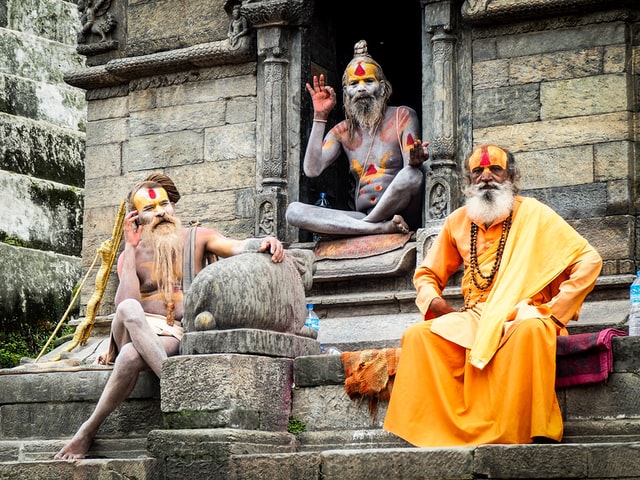Applying vibhuti (sacred ash), sandalwood paste, kumkum, and tilak is a common practice among Hindus. Each element among them has a different significance in Hinduism. Communities wear the tilak made of sandalwood paste, kumkum, or vibhuti in the forehead in several ways.
Why people in India put vibhuti, tilak, and sandalwood paste on their forehead and body?
Vibhuti (the sacred ash) is auspicious and an important religious ritual as it comes from the sacred fires like dhuni, havan, and homa, which are burnt by the saints or ascetics or priest. The sacred fire is part of any religious ceremony or in the temple. So, it carries the spiritual waves and it is good to apply it to the body as it activates the chakras in your body and will also provide you spiritual vibrations.
The bhasam (ash) reminds us that everything goes back to nature. Death is the ultimate reality-nothing is eternal here. You should not get attached to mundane things of life. Besides, you should focus on your observation and energy on getting self-enlightenment (Moksha).
The saints apply the vibhuti in a particular way that helps them to identify the path they are following.
The sign forms a kind of familiarity and fraternity amongst the people imitating the same path. Because group energy is very crucial in spiritual practices.
Hindus apply sandalwood paste in the place of the third eye because its cooling quality activates the third eye for meditators. To activate the third eye, you must devoid malice, anger, jealousy, or sexual feeling in you. Rather start sharing love, compassion, and positivity with others.
In India, tilak applied in the twelve parts of the body: head, neck, shoulder, both upper-arms, both forearms, chest, both sides of the torso, and stomach. You may identify each saint by his way of wearing tilak and vibhuti.
As in, Shiva devotees wear three horizontal lines in the forehead, whereas Vishnu devotees apply the three vertical lines (tripundra). But the aghori’s (ascetics) apply the vibhuti all over the body.
Feature Image Credit: Photo by Fares Nimri on Unsplash. (free for commercial use)
